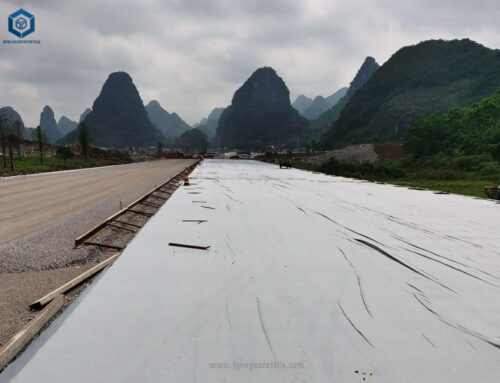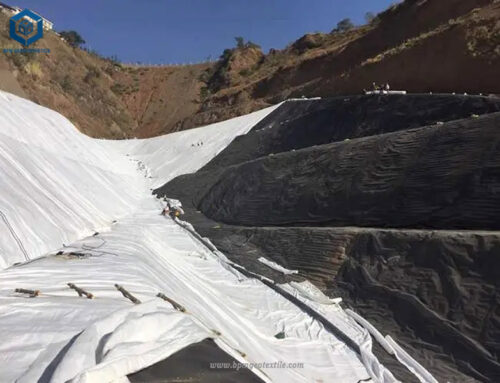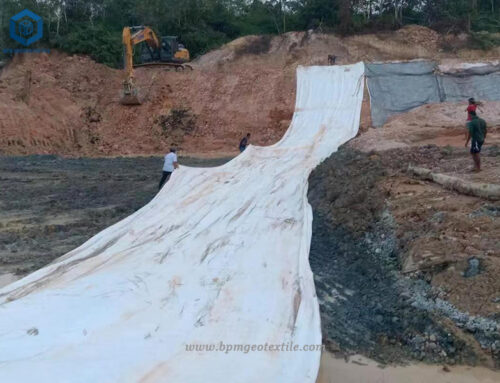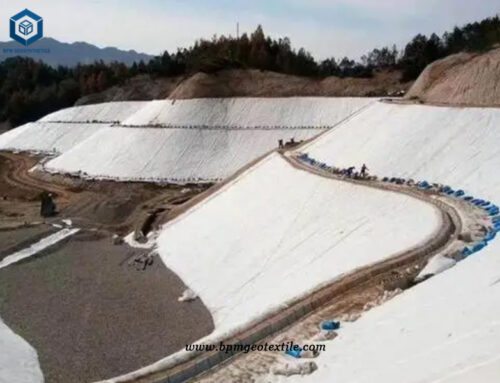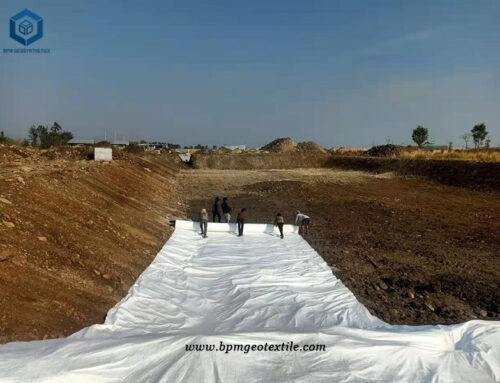Long fiber nonwoven geo fabric for driveways, also known as nonwoven geotextile, is a water-permeable geosynthetic material made of synthetic fibers by needle punching or weaving. The finished product is cloth, generally 4-6 meters wide and 50-100 meters long. The geotextile has Geotextile has excellent filtration, isolation, reinforcement and protection, high tensile strength, good permeability, high temperature resistance, freezing resistance, aging resistance and corrosion resistance. The nonwoven geotextile is the ideal geosynthetic material widely used for driveways and railway construction projects.
Case Study
- Location: Johor, Malaysia
- Product: 125gsm Long Fiber Nonwoven Geotextile
- Application: Driveway Construction
With geotextile fabrics being used so commonly on today’s active jobsites, it is hard to believe that this technology did not even exist just eight decades ago. This technology is commonly used to separate soil layers, and has turned into a multi-billion dollar industry.
While the market for geotextiles did not even exist just 70 years ago, by 2018 in had turned into a $4.1 billion market worldwide. And it continues to grow at a rapid rate. It is projected that this number will grow at a compounding annual growth rate (CAGR) or 12.1 percent through the year 2025.
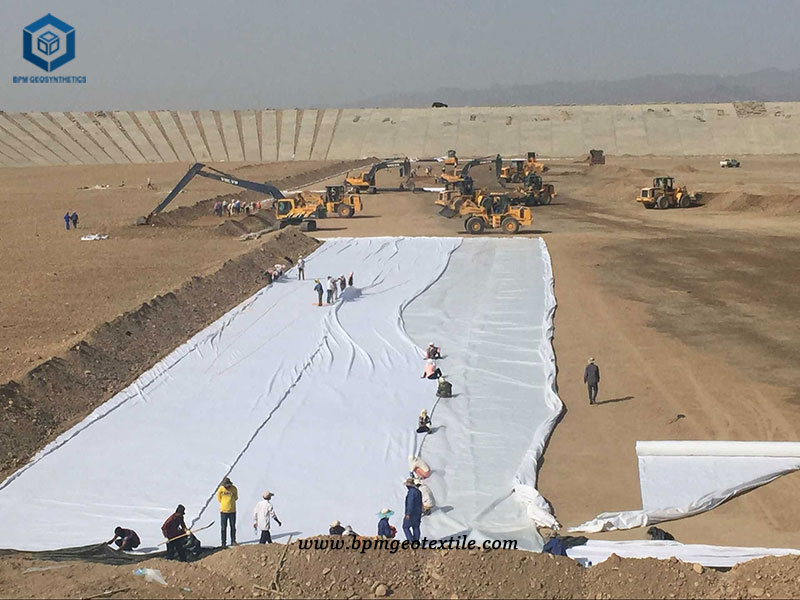
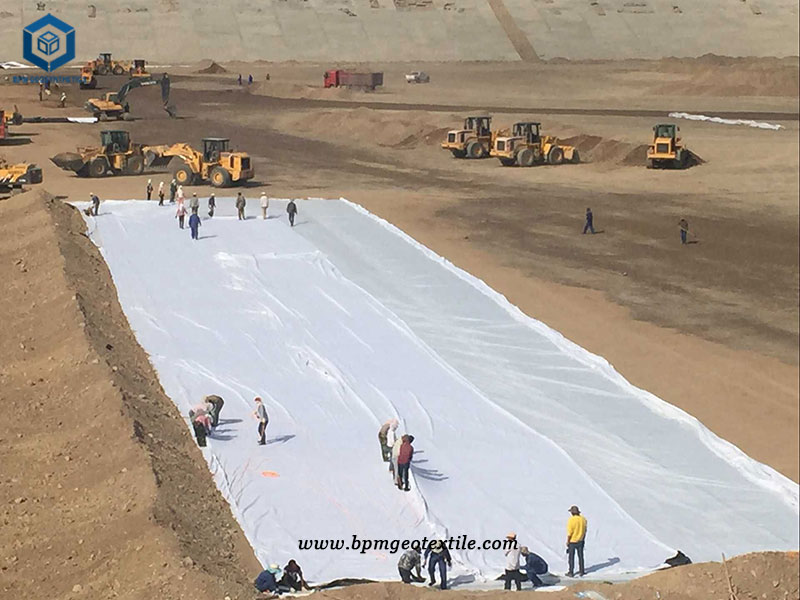
The extremely rapid growth of the geotextile market has been fueled by the effectiveness of the products. The use of this technology has evolved into an accepted best management practice, required by government agencies, specified by design consultants, and used routinely by contractors, cities and towns and property owners. Long fiber nonwoven geo fabric for driveways, if it is properly specified and installed, can provide significant value. The common and most obvious benefit for all geotextile use is soil separation. By separating soil layers, the fabrics prevent them from mixing.
Prior to the evolution of geotextile technology, the construction industry struggled with mixing soil layers during the site construction process. In road building, for example, processed gravel applied to the surface would often sink into softer subsoils. An old adage in the road building industry goes something like this, “When you spread 50 pounds of stone over 50 pounds of mud you end up with 100 pounds of mud!” The heavier stone will simply disappear into the softer subsurface material. When geotextile fabrics are properly installed over the subsurface material, such mixing and contamination are effectively eliminated.
To achieve the desired results, choosing the most appropriate and site specific geotextile fabric is essential. By far the two most commonly used types are commonly known as woven and non-woven. Woven geotextiles are comprised of woven slit film polypropylene materials. Because they combine high strength and low permeability, they are very effective at bridging over wet or inferior soil layers. Non-woven geotextiles combine the strength of woven fabrics with high permeability, making them a better choice when applications require both separation and filtration. Non-woven fabrics are comprised of needle punched polypropylene, allowing separation and filtration to occur simultaneously.
Beyond woven and non-woven, two other important geotextile product groups are important to the ground stabilization toolbox. They are woven monofilament and spun bound geotextiles. Woven monofilaments combine the strength of woven with the permeability of non-woven fabrics. Conversely, spun bound fabrics combine the toughness of woven geotextiles with the permeability of non-woven products.
Solution
The customer searched our company from the website and saw that BPM had done many projects on the website. He asked us whether we had done the dam project. In this project, how thick the non woven geotextile is generally used. He also asked how to construct and whether welding services can be provided. Based on our many years of experience, we recommended 125gsm non woven geo fabric for driveways with American Standard standards to our customers, and the pictures of dam projects were sent we have done before to customers for reference, and provide customers with videos on how to weld and how to use welding machines. The customer inquired about the service life of the two thicknesses according to the two thicknesses we recommended. In our communication, customers can feel that we have enough experience, so they trust us very much. We provided detailed quotations of two thicknesses for customers’ reference. After comparing the prices, the customer chose 125gsm geo fabric for driveways。
Advantages
Geotextile fabric is often made from polypropylene or polyester fibers processed by woven, needle-punched or heat-bonded methods. short fiber needle punched geotextile fabric is made from 100% virgin staple polypropylene fibers that are tangled and interlocked with each other by needle-punching process. It is the kind of non woven geotextile fabric which is robust, durable, permeable and resist to deformation. BPM short fiber nonwoven geotextile fabric is widely used to increase ground support and soil stabilization in a given location, it has the characteristics of high tensile strength, high elongation rate, excellent UV stabilization, excellent filtration and good abrasion resistance, etc. It is widely used for filtration, separation, protection, drainage applications in civil environmental engineering and construction projects.
- It has good air permeability and water permeability, allowing water to pass through, thereby effectively intercepting sand and soil loss.
- Effectively diffuse, transfer or decompose concentrated stress to prevent soil from being damaged by external forces.
- Prevent mixing between the upper and lower layers of sand, gravel, soil and concrete.
- The mesh is not easy to be blocked, and the mesh structure formed by the unshaped fibrous tissue has strain and mobility.
- High water permeability, it can still maintain good water permeability under the pressure of soil and water.
- Corrosion resistance, using polypropylene or polyester and other chemical fibers as raw materials, acid and alkali resistance, no corrosion, no insects, and anti-oxidation.
- Simple construction, light weight and easy to use.
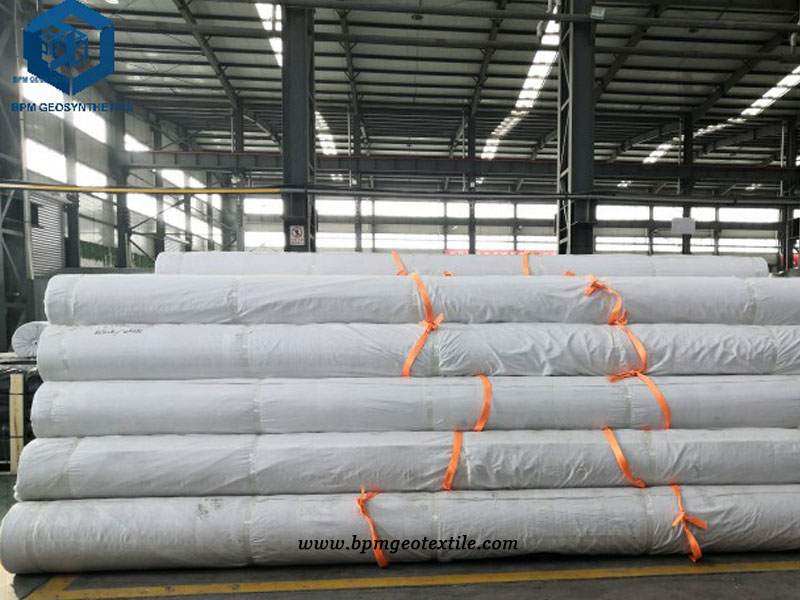
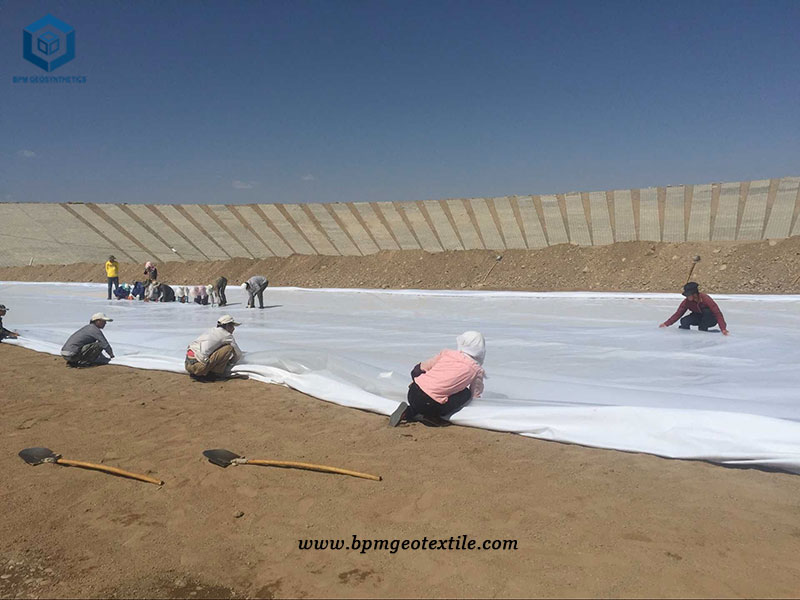
Long Fiber Nonwoven Geo Fabric for Driveways Construction
How many times have you seen road construction? Houses being built? How about those huge rolls of black fabric on the land beside highways and interstates? Long Fiber Nonwoven geo fabric for driveways is an integral part of construction whether on the road or in a building or in your home. Nonwoven geotextiles offer many advantages in the geotextile construction market. Nonwoven geotextile fabric is used in roadway construction. Geotextiles have multiple advantages when used in roadway projects. They can extend the life of the paved road by helping to reduce the number of potholes. Using the geo fabric for driveways has the potential to significantly reduce the number of times roads need to be repaired.
Nonwoven geotextile fabrics are also used for erosion control. Road crews use it for the land beside highways and interstates to help prevent erosion from the rain, snow and wind.
Examples of Nonwovens in Geotextiles and Construction Materials
- Artificial turf
- Capillary mats
- Covers & seed strips
- Geotextiles, drainage & erosion control
- Greenhouse shading
- Insulation
- Modified bitumen roofing
- Pavement overlays
- Roadway reinforcements
- Roofing components
- Soil stabilizers
Polyester fiber is resistant to acids and weak alkalis. It is stable to various oxidants and reducing agents. Polyester fiber is not resistant to strong alkalis. High leakage and high alkali will completely embrittle the fiber. Polypropylene fiber has good chemical stability, both acid and alkali resistance, and is also very stable to various oxidants. Under normal circumstances, polyester is only more resistant to sunlight than polypropylene. Polypropylene has to be treated with ultraviolet rays to meet the requirements of long-term exposure. However, geotextiles are generally not exposed to the sun or air, and the material is not required to have too high resistance. Solar performance; more importantly, polypropylene fiber has strong acid and alkali resistance, and can guarantee 100% stable performance in various geological conditions and use environments. The acid resistance of polyester is fair, but the alkali resistance is very poor, and weak alkali can decompose it, so it is not suitable for use in any alkaline environment. The leachate in the landfill contains complex heavy metal decomposition products, including strong acids and alkalis. Nowadays, PP staple fiber non-woven fabrics are generally used in foreign landfill projects.
Malaysian customers used to buy this product locally, but because the price was too high, they chose to buy from us after visiting our factory, and the CIF price was executed. Purchased 200,000 square meters of 125g PET filament geotextiles from our company to repair their local cracked roadbed.
The long fiber nonwoven geotextile are used together with geomembrane, geonets or geocell as the geocomposites to be a solid and strict waterproof system to avoid the tailing waste to pollute the around surroundings. It is often laid above the geomembrane to protect the geomembrane from improper handling.So the geotextile function separation and separation layer.
They buy about 200gsm in 200,000sqm of PET filament geotextile together with 200,000sqm of geomembrane from our company.
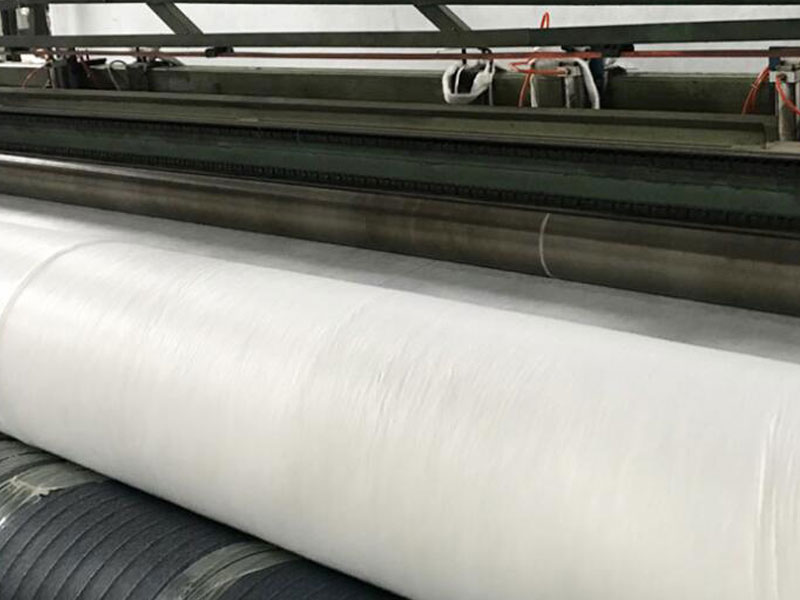
Below you find the general installation instructions for the geotextile fabrics. Installation requirements and methods may vary depending on the specifications/plans of your location.
STEP 1: Prepare the install area. Standard preparation involves a process of removing stumps, stones or sharp objects that may be able to penetrate the area. For roadways, vegetation, roots, weeds and topsoil may also need to be removed.
STEP 2: Smooth and level the location. If there is especially soft soil in the area, soil may need to be removed and/or replaced with a higher grade material.
STEP 3: Place the geotextile fabric in the installation area. Fabric should be laid out according to specific plans or site recommendations. Fabric should be stretched until it is as flat and as tight as possible. Each fabric should be overlapped according to site instructions. If no instructions exist, a minimum of 12’’ to 18’’ is recommended.
STEP 4: Secure the fabric with staples, pins, soil or other heavy materials. Fabric should be secured along the edges and then again on overlapping portions of material.
STEP 5: Place aggregate and/or other backfill on top of the fabric. Aggregate should be backfilled as required for your project. Aggregate lifts should be at least 6’’ thick. Increased thickness may be required for softer subgrades.
About BPM
BPM manufactures and wholesales many types of effective and states of the art geotextile, geomembrane, and other geosynthetics to over 36 countries. BPM geosynthetic products are widely used across a variety of industries including waste containment, water containment, aquaculture, industrial project, energy project and mining projects, etc. BPM main customers are from Australia, France, Sweden, UK, Hungary, New Zealand, Poland, Mexico, Ecuador, Brazil, Pakistan, Bangladesh, Thailand, Vietnam, Malaysia, Indonesia, Singapore, Philippines, Sri Lanka, India, UAE, Saudi Arabia, Qatar, Kenya, etc.
BPM is not only manufacturing best quality geosynthetic products but also providing professional design and installation service. OEM, ODM, custom development and fabrication are also available. If you have any questions or inquiries, please fill and submit the following form, we will reply as soon as possible.

